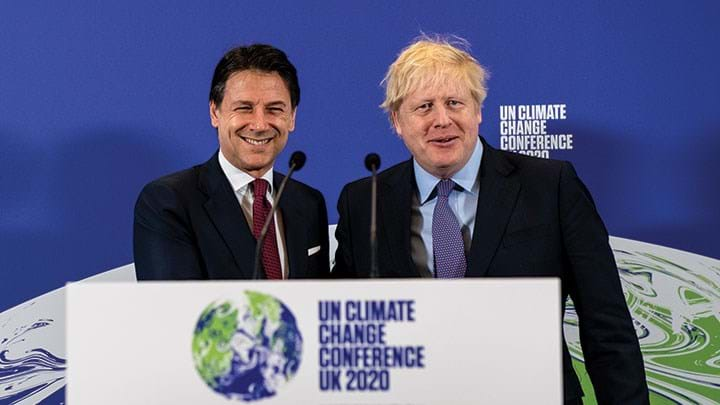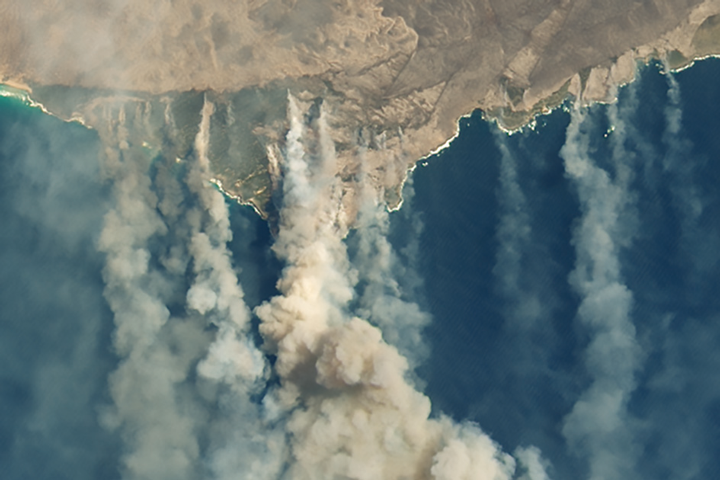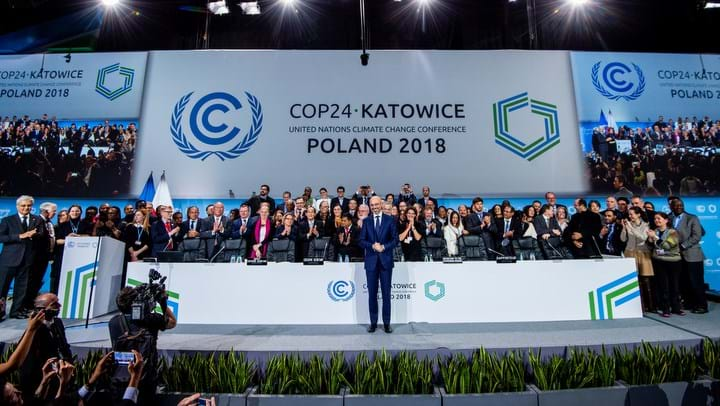Climate crisis explainer: what is COP26 and why is it important?

In November, the 26th UN Conference of Parties (COP) climate summit will take place in Glasgow, UK. Known as COP26, it will mark five years since the Paris Agreement, and it will be crucial that real progress is made at the summit in order to take immediate action on the climate emergency.
THE summit will take place from 9 – 20 November with around 30,000 delegates expected to attend. This includes heads of state, climate experts, business leaders, and campaigners. COP26 is co-hosted with Italy and a pre-COP meeting, which will include a youth event, will be held in Milan from 28 September to 2 October.
The aim of the COP summits is to coordinate global action to deal with the climate emergency, with governments attempting to negotiate policies that will achieve this. The first COP was held in Berlin, Germany, in 1995. Perhaps one of the most important COPs to date was COP21 in France in 2015 which saw the birth of the Paris Agreement; a crucial framework for global action. However, there are still aspects of the Paris Agreement that need to be finalised, and the world is currently not on track to meet its climate goals.
Chemical engineers have a vital role to play in addressing the climate emergency. There are many examples where chemical engineers can make a difference such as developing new processes for cement and steel production, along with developing jet fuel from waste, small modular reactors, and new processes for hydrogen production. They can also contribute through carbon capture and storage, tackling methane emissions, developing ways to efficiently recycle batteries, and producing ‘green’ chemicals, bioplastics, and biofuels. Engineers can also play a part in influencing policy decisions.
Ahead of COP26, IChemE has said that it fully recognises the climate emergency.
An urgent need for global action
The average global temperature is now 1.1oC higher compared to pre-industrial times, and there has been a 0.2oC increase in the 2015–2019 period compared to the previous five-year period, according to the World Meteorological Organisation. This has already led to a notable increase and worsening of extreme weather events such as flooding and bushfires, and poses a significant threat to low-lying nations, particularly island states, due to rising sea levels.

The aim of the Paris Agreement is to keep the average global temperature rise to well below 2oC, and work to limit this to 1.5oC. The need to limit the temperature rise to 1.5oC was reinforced by the UN Intergovernmental Panel on Climate Change (IPCC) report in 2018 which warned that in order to meet this target, human-caused CO2 emissions will need to fall by around 45% from 2010 levels by 2030, and reach net zero by 2050.
Despite this, 2019 was the second warmest year on record since 1850 and the Global Carbon Project (GCP) reported in December that emissions from fossil fuels and industry were projected to rise 0.6% compared to 2018. The GCP also said in an Environmental Research Letters paper that 2020 emissions are projected to rise further and that there are no signs that emissions have peaked yet.
The volume of CO2 emissions that can enter the atmosphere and still limit warming to 1.5oC, known as the carbon budget, is forecasted (by DNV-GL’s latest Energy Transition Outlook) to be exhausted in 2028. At the same time, a report by the UN Environment Programme and a coalition of research organisations calculated that by 2030 the world is on track to produce twice as much fossil fuel as can be burned. The current planned production of oil, gas, and coal by 2030 will lead to 39bn t of CO2 emissions, which is 120% more than what is possible under a 1.5oC scenario.
Clearly, stronger commitments and real action are needed.
Unresolved issues from previous COPs
At COP24 in Poland in 2018, 196 countries agreed on a rulebook for enacting the Paris Agreement. However, the negotiations were fraught with complications, for example the US, Saudi Arabia, Russia and Kuwait held up negotiations as they didn’t want to welcome the IPCC report. Eventually a compromise was reached where the “timely completion” of the report was welcomed, and countries were “invited” to use it.
The rulebook also didn’t include the finalisation of Article 6, which would set out rules for a global carbon market and exchanging “carbon credits”. This discussion was postponed until COP25.

COP25 was originally supposed to take place in Chile, but this was not possible due to violent anti-government protests. Just a month before the climate talks were due to begin in December 2019, Spain agreed to host the summit, however Chile retained the presidency.
The summit was the longest in COP history, with the negotiations running over by two days. The talks almost collapsed, with weak compromises only being made at the last minute. One meeting was even held up due to participants disagreeing over what the negotiations should be called. Most of the difficult topics were pushed back to talks in Bonn in June 2020 as well as COP26.
According to Carbon Brief, countries could not agree on common reporting tables and common tabular formats. A common timeframe for the submission of Nationally Determined Contributions (NDCs) – each country’s Paris Agreement pledge – could also not be agreed upon.
The real danger is when politicians and CEOs are making it look like real action when in fact almost nothing is being done apart from clever accounting and creative PR.
Greta Thunberg
A key focus of COP25 was supposed to be finalising Article 6. Some of the many issues surrounding Article 6 include the importance of avoiding double counting, which is when the carbon credits are included by both the host country and the purchasing country, and ensuring a net reduction in emissions rather than just offsetting them elsewhere. While an agreement was almost reached, this has now been postponed and talks will begin again from scratch at the next meeting. Carbon Brief has a detailed explanation of the importance of Article 6 and the complications surrounding it.
Climate activist Greta Thunberg said at the summit: “I still believe that the biggest danger is not inaction. The real danger is when politicians and CEOs are making it look like real action when in fact almost nothing is being done apart from clever accounting and creative PR.”
Poorer countries feel the impact of the climate crisis more, despite having contributed less to it in terms of emissions, and this is acknowledged in the Paris Agreement through an option to report “loss and damage”. However, there was a failure at both COP24 and COP25 to add sufficient financial provisions to support the most vulnerable countries.
The Alliance of Small Island States (AOSIS) said in a closing statement at COP25: “We are appalled and dismayed at the failure to come to a decision on critical issues, the scale of inaction, ineffective processes and some parties’ yeoman commitment to obstruction and regressive anti-science positions. Climate action is not a wish. It is a matter of survival and it must be funded.”
UN Secretary General, António Guterres, said on Twitter: “I am disappointed with the results of COP25. The international community lost an important opportunity to show increased ambition on mitigation, adaptation and finance to tackle the climate crisis. But we must not give up, and I will not give up.”
There were also some positive outcomes at COP25, as businesses and NGOs often announce net zero and green commitments at the COPs. According to Business Green, more than 177 companies committed to aligning their business strategies with emissions targets, and 500 more pledged to achieve net zero emissions by 2030.
What needs to happen at COP26
COP26 must find a resolution to Article 6, along with other items such as suitable loss and damage financing that were unresolved at previous summits.
The Paris Agreement is designed to be a “ratchet” system, where each NDC represents progression and raises ambition over time. There are no specific requirements as to how the NDCs should be structured so they vary greatly between nations. Each country’s NDC was originally submitted for COP21 and now needs to be updated. Current NDCs are insufficient to meet the 1.5oC target and under current pledges the world is on track to warm by 3oC, with the most optimistic policy scenario being 2.8oC, according to Climate Action Tracker (CAT).
Countries are expected, but not required to, improve on their Paris pledges in 2020 prior to COP26. Due to the lack of a common timeframe for NDCs, nations that set an NDC with a timeframe up to 2025 will be asked to submit a new NDC, whereas countries with 2030 targets will be asked only to communicate or update their pledges, according to Climate Home News.
“We are not seeing the kind of action you’d expect from governments facing a climate emergency,” said Niklas Höhne, founding partner of CAT partner organisation NewClimate Institute. “Since last year’s update, our temperature estimate has not improved from climate action, and many governments are still failing to meet their often insufficient targets.”
CAT has a tool to check for updates on whether countries have submitted their new or updated NDCs. It is expected that these will continue to be updated ahead of the summit.
Reducing global emissions will also become more difficult when the US, the second-largest emitter, leaves the Paris Agreement on 4 November, just days before COP26 and one day after the US presidential election. A new US President would be able to rejoin the Agreement, which is a process that only takes 30 days.
At the COP26 launch on 4 February, Sir David Attenborough said that the Paris Agreement was a huge step forward but now we need to do something about it. “It is now up to us to put before the nations of the world what has to be done. We don’t need to emphasise to them or to you that the longer we leave it – of not doing things but going on talking about the problems – the worse it’s going to get. And in the end, unless we do something, it becomes insoluble. Now is the moment. Now, Glasgow becomes extremely important.”
It is crucial that steps are made in the right direction at COP26. Writing in February 2016, not long after the Paris Agreement was adopted, IChemE Energy Centre chair Stefaan Simons said: “The political conversation will continue but this won’t save the planet. Chemical engineers can turn words into actions.” The same is still true today but that action is needed more urgently than ever before.
The clock is ticking.
Recent Editions
Catch up on the latest news, views and jobs from The Chemical Engineer. Below are the four latest issues. View a wider selection of the archive from within the Magazine section of this site.




